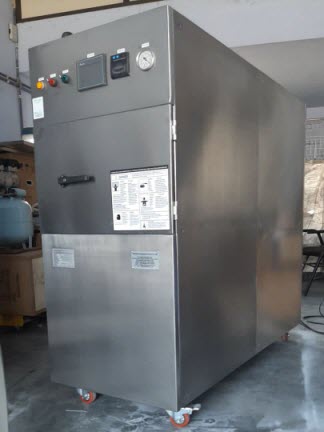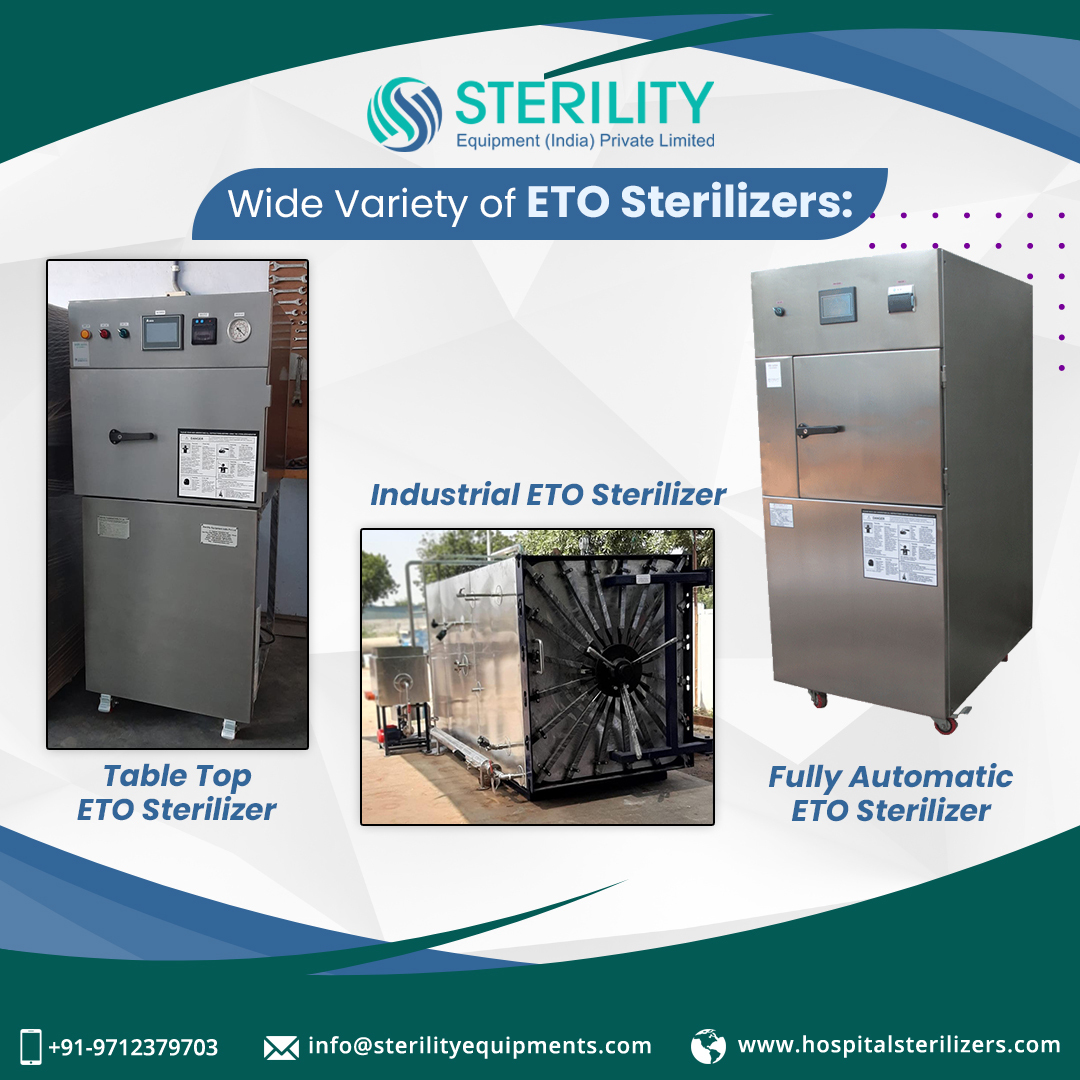Maintaining a clean and hygienic laboratory environment is paramount for the accuracy and reliability of scientific research and the well-being of laboratory personnel. Laboratories are dynamic spaces where various experiments, tests, and analyses take place, involving a wide range of biological samples, chemicals, and equipment. These components can harbor pathogens and contaminants that pose serious risks to both experiment integrity and personnel health. To mitigate these risks, sterilization equipment is essential.
Sterilization equipment effectively eliminates microorganisms, including bacteria, viruses, fungi, and spores, from laboratory tools, surfaces, and materials. By subjecting items to high temperatures, steam, chemicals, or radiation, sterilization processes destroy or deactivate these harmful agents, ensuring a clean and safe working environment.
The importance of sterilization equipment extends beyond maintaining cleanliness. It also safeguards against cross-contamination, a significant concern in laboratories. Cross-contamination occurs when microorganisms or substances from one sample or experiment contaminate another, leading to inaccurate results or compromised outcomes. Through proper sterilization, the risk of cross-contamination is significantly reduced, preserving the integrity and validity of scientific research.
Furthermore, sterilization equipment plays a crucial role in complying with regulatory standards and industry guidelines. Many industries, including healthcare, pharmaceuticals, and food and beverage, have stringent regulations in place to ensure the safety and quality of products and services. Sterilization practices are an integral part of meeting these requirements, as they help maintain hygienic conditions and prevent the spread of infectious agents.
Types of Sterilization Equipment
Laboratories utilize a range of sterilization equipment, each employing distinct methods to achieve effective sterilization. Understanding the different types of sterilization equipment and their advantages is crucial for selecting the appropriate method for specific laboratory needs.
- Autoclaves: Autoclaves are widely used in laboratories for their versatility and reliability. They utilize high-pressure steam to sterilize a variety of materials, including glassware, instruments, and biological waste. Autoclaves offer the advantage of rapid sterilization, penetrating even complex items and eliminating a wide range of microorganisms. They are ideal for routine laboratory sterilization needs.
- Dry Heat Sterilizers: Dry heat sterilizers employ hot air to achieve sterilization. These sterilizers are suitable for heat-stable materials that may be damaged by moisture or steam, such as glassware, powders, and oils. Dry heat sterilization requires longer exposure times and higher temperatures compared to autoclaves, making it suitable for heat-resistant items.
- Chemical Sterilization: Chemical sterilization methods involve using chemical agents to eliminate microorganisms. Ethylene oxide gas is a common chemical sterilant used in laboratories, particularly for heat-sensitive and moisture-sensitive materials. It penetrates various items and destroys microorganisms effectively. However, it requires specific equipment and adequate ventilation due to its toxic nature.
- UV Sterilizers: UV sterilizers use ultraviolet light to destroy microorganisms. They are commonly employed for surface sterilization of items such as pipettes, safety cabinets, and small laboratory equipment. UV sterilization offers quick and efficient decontamination, but it is limited to direct line-of-sight exposure and may not penetrate shaded areas.
- Filtration Systems: Filtration systems are used to sterilize liquids or gases by passing them through sterilizing filters. These filters have microscopic pores that trap and remove microorganisms. Filtration is often employed for sterilizing media, buffers, and sensitive solutions that cannot withstand heat or chemical sterilization methods.
Each type of sterilization equipment has its advantages and applications. Autoclaves provide rapid and reliable sterilization, while dry heat sterilizers are suitable for heat-resistant materials. Chemical sterilization offers versatility for heat- and moisture-sensitive items. UV sterilizers are effective for surface decontamination, and filtration systems are used for sterilizing liquids and gases.
Choosing the Right Sterilization Equipment for Your Laboratory
Selecting the right sterilization equipment is crucial to ensure optimal sterilization efficacy and compatibility with your laboratory’s specific needs. Considerations such as the type of materials, volume of samples, and desired sterilization method play a significant role in making informed decisions.
- Type of Materials: Consider the types of materials that require sterilization in your laboratory. Different sterilization methods may be more suitable for specific materials. For example, autoclaves are effective for sterilizing glassware, instruments, and biological waste, while dry heat sterilizers are suitable for heat-stable materials like powders and oils. Ensure that the equipment you choose is compatible with the materials you routinely handle.
- Volume of Samples: Assess the volume of samples that need to be sterilized regularly. Autoclaves are commonly used for bulk sterilization due to their large chamber capacity, allowing for simultaneous sterilization of multiple items. For laboratories with smaller sample volumes, compact sterilizers or alternative methods like chemical sterilization may be more appropriate.
- Sterilization Method: Consider the desired sterilization method based on the nature of your samples and laboratory requirements. Autoclaves provide reliable steam sterilization, while dry heat sterilizers offer heat-based sterilization. Chemical sterilization methods, such as ethylene oxide gas, are effective for heat- and moisture-sensitive materials. Evaluate the advantages and limitations of each method to ensure it aligns with your specific needs.
- Speed and Efficiency: Assess the speed and efficiency requirements of your laboratory. Autoclaves generally offer rapid sterilization cycles, making them suitable for laboratories with high sample turnover. Dry heat sterilizers typically have longer cycle times but can accommodate larger and heat-resistant items. Consider the time-sensitive nature of your work and select equipment that meets your efficiency goals.
- Equipment Size and Capacity: Evaluate the available space in your laboratory and the physical size of the sterilization equipment. Ensure that the equipment can be accommodated comfortably in the designated area. Additionally, consider the capacity of the sterilization equipment to handle your workload effectively. Choose a size and capacity that aligns with your laboratory’s sample volume and workflow demands.
- Safety Features and Compliance: Ensure that the chosen sterilization equipment meets safety standards and regulatory requirements. Look for features such as automated controls, pressure and temperature monitoring, and safety interlocks to minimize the risk of accidents. Compliance with industry guidelines and regulations is crucial for maintaining a safe laboratory environment and meeting quality assurance protocols.

Best Practices for Sterilization Equipment Maintenance and Validation
Regular maintenance and validation of sterilization equipment are essential to ensure their performance, reliability, and adherence to industry standards.
- Cleaning and Decontamination: Regularly clean and decontaminate sterilization equipment according to manufacturer guidelines and standard operating procedures (SOPs). Thoroughly remove any residue, ensuring that no contaminants remain. Use appropriate cleaning agents and techniques that are compatible with the equipment and materials being sterilized. This helps prevent the buildup of contaminants and ensures effective sterilization.
- Calibration and Performance Verification: Regularly calibrate and verify the performance of sterilization equipment to ensure accurate and consistent results. Follow the equipment manufacturer’s recommendations and use traceable calibration standards. Verify critical parameters such as temperature, pressure, and time to ensure they meet specified requirements. Calibration certificates and records should be maintained as part of the equipment documentation.
- Preventive Maintenance: Implement a preventive maintenance schedule for sterilization equipment. This includes routine inspections, lubrication of moving parts, replacement of worn-out components, and addressing any equipment malfunctions promptly. Follow the manufacturer’s maintenance guidelines and keep a maintenance log to track all servicing activities. Preventive maintenance helps identify potential issues early and extends the lifespan of the equipment.
- Documentation and Record-Keeping: Maintain comprehensive documentation and record-keeping for all sterilization equipment. This includes equipment manuals, calibration certificates, maintenance logs, and SOPs. Document any repairs, modifications, or incidents related to the equipment. Accurate and up-to-date records help demonstrate compliance with regulatory requirements, facilitate traceability, and assist in troubleshooting and audits.
- Training and Competency: Ensure that personnel responsible for operating and maintaining sterilization equipment receive adequate training and possess the necessary competencies. Training programs should cover equipment operation, maintenance procedures, safety precautions, and adherence to relevant regulations. Regularly assess and update the skills of personnel to ensure they are capable of handling the equipment correctly.
- Regulatory Compliance: Adhere to applicable regulatory standards and guidelines related to sterilization equipment. Stay informed about industry best practices and any updates to regulations. Comply with regulations such as Good Laboratory Practices (GLP), Good Manufacturing Practices (GMP), and relevant international standards. Regularly review and update procedures to reflect the latest requirements and maintain compliance.






